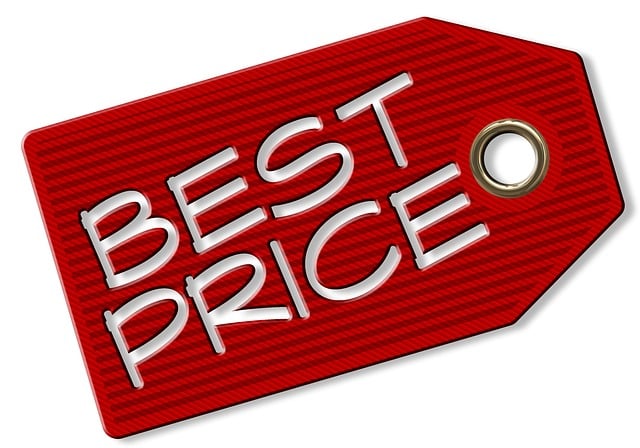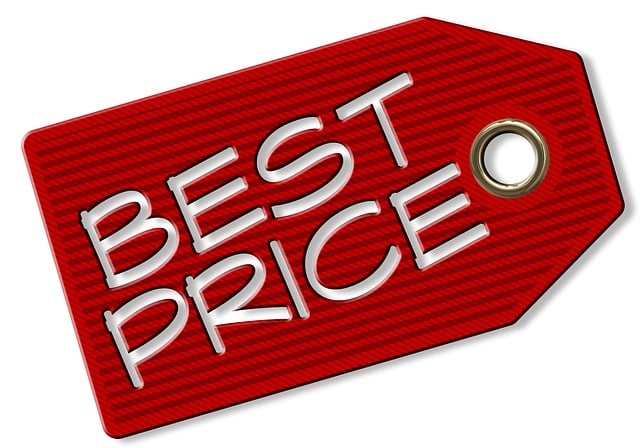Pricing professional services requires a comprehensive analysis of direct and indirect costs, industry benchmarks, and client price sensitivity. Target market definition and niche positioning help set competitive prices reflecting expertise. Understanding price elasticity of demand is crucial for strategic pricing adjustments. Balancing time, materials, and results justifies higher rates perceived as quality indicators. Dynamic pricing reviews ensure market competitiveness, client satisfaction, and sustainable profitability while adhering to legal considerations.
Pricing professional services fairly and profitably is an art that requires careful consideration. In today’s competitive market, understanding your costs, defining your niche, and setting competitive rates are crucial steps. By factoring in perceived value and regularly reviewing your strategy, you can ensure long-term success. This comprehensive guide walks you through each essential step to pricing your services effectively, from assessing time investment to navigating the dynamics of your target market.
- Understand Your Costs and Time Investment
- Define Your Target Market and Niche
- Set Competitive Yet Profitable Rates
- Factor in Value and Perceived Worth
- Regularly Review and Adjust Pricing Strategy
Understand Your Costs and Time Investment

To price professional services fairly and profitably, it’s essential to have a deep understanding of your costs and time investment. This includes breaking down all expenses associated with delivering your service, from direct costs like materials and travel to indirect costs such as overhead, insurance, and marketing. By conducting a thorough price analysis, you can ensure that your pricing structure reflects the true value of your work while maintaining profitability.
Additionally, consider the market-based pricing mechanisms that are prevalent in the industry. Staying informed about the rates charged by competitors or industry benchmarks allows you to set prices that align with current market conditions. This not only helps attract customers but also ensures that your business remains competitive and sustainable. Remember, balancing these factors is key; understanding your costs and staying attuned to market dynamics will enable you to find the right price point that caters to both your bottom line and your customers’ budgets, especially when considering the price sensitivity of customers who now actively seek out value for money in professional services.
Define Your Target Market and Niche

Defining your target market and niche is crucial for pricing professional services fairly and profitably. Understanding your ideal clients allows you to tailor your offerings, communicate value effectively, and set prices that reflect both your expertise and the perceived worth of your service. For instance, if you’re a graphic designer, your niche might be startups in the tech industry looking for branding packages. Once you’ve identified your target market, analyze their needs, budgets, and competitors to establish a competitive yet profitable pricing strategy.
This process involves considering factors like cost-volume-profit analysis to ensure your prices cover expenses while maximizing profits. Additionally, product positioning through pricing can help differentiate your services from competitors. For example, offering premium pricing justifications based on specialized skills or expedited delivery times can command higher rates. However, it’s essential to remain flexible and periodically review pricing strategies to adapt to market changes and maintain competitiveness. Give us a call at profit maximization techniques for expert guidance.
Set Competitive Yet Profitable Rates

Setting competitive yet profitable rates is an art and a science for professional services. It involves understanding your market, including the price elasticity of demand for your specific service. Price elasticity measures how sensitive customers are to changes in pricing; it’s not static across different goods or services. For instance, the elasticity of different goods can vary greatly—a luxury item might have low elasticity, meaning a price increase won’t significantly deter demand, while essential services like healthcare or utilities typically exhibit higher elasticity.
Knowing your service’s price elasticity is crucial for pricing strategy. If demand for your service is elastic, you may need to adjust rates strategically to manage customer volume and revenue stability. Conversely, inelastic demand suggests customers are less price-sensitive, allowing for more aggressive pricing. As a professional, visit us at elasticity of different goods anytime to gain deeper insights into these dynamics and ensure your pricing reflects market realities while ensuring profitability.
Factor in Value and Perceived Worth

Pricing professional services fairly and profitably requires a nuanced understanding of value and perceived worth. It’s not just about the time and materials involved; it’s about delivering results that meet or exceed client expectations. Start by considering the unique benefits your services offer. Not every service is created equal, so factor in the specialized knowledge, experience, and personalized attention you bring to each project.
Understanding the psychology behind consumer pricing can also help set competitive rates. Research shows that clients often associate higher prices with better quality, so don’t be afraid to reflect your expertise and value proposition in your pricing structure. Implement effective price segmentation techniques to tailor your rates based on client type, project scope, or industry standards. For example, give us a call at market-based pricing mechanisms to discuss how to align your prices with the perceived value you deliver, ensuring both customer satisfaction and sustainable profitability.
Regularly Review and Adjust Pricing Strategy

Staying competitive and profitable requires a dynamic pricing strategy for professional services. Regularly reviewing and adjusting your pricing is crucial, as market conditions, client expectations, and the value of your skills evolve over time. By continuously assessing your rates, you can ensure they remain fair and aligned with industry standards while also reflecting the unique value proposition of your business. This proactive approach not only protects your bottom line but also fosters trust and loyalty among clients who appreciate transparency and market-competitive pricing.
Consider exploring different pricing strategies for services like price discrimination, where you offer varied rates based on customer segments or usage patterns, as long as it’s within legal aspects. Additionally, understanding the psychology of pricing and employing techniques like value-based pricing can help set retail prices that accurately represent your service’s worth without overcharging. For instance, visit us at price segmentation techniques anytime to learn more about tailoring your pricing strategies to different client profiles, enhancing both customer satisfaction and business performance.
Pricing professional services fairly and profitably requires a balanced approach. By understanding your costs, defining your niche, setting competitive rates, recognizing the value you offer, and regularly reviewing your strategy, you can ensure your pricing strategy is sustainable and aligns with your business goals. This enables you to attract clients who appreciate your expertise while maintaining healthy profit margins. Remember, the right price point can be a powerful tool in building a successful and thriving professional services business.
